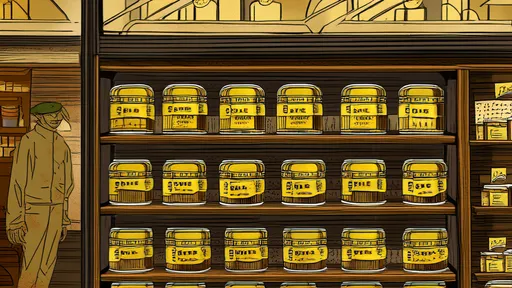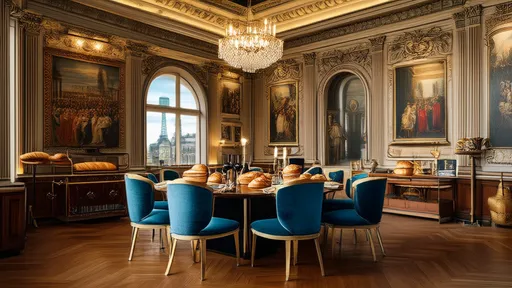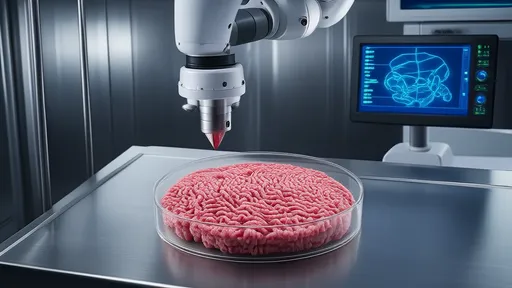The clatter of silverware and the murmur of conversation in a fine dining establishment are sounds so commonplace today that we scarcely give them a thought. Yet, this entire social ritual, the very concept of the restaurant as we know it, was born from a single, tumultuous event: the French Revolution. Before 1789, public dining for the bourgeoisie and aristocracy was a very different affair, and its transformation is a story inextricably linked to the collapse of the ancien régime and the rise of a new social order.
Prior to the revolution, France's culinary landscape for those who could afford to eat out was dominated by two institutions: the traiteur and the table d'hôte. Traiteurs were members of a powerful guild, licensed to prepare and sell specific prepared dishes, most often ragouts, which were hearty stews. Their offerings were limited by strict guild codes, and the idea of choosing from a varied menu was nonexistent. One bought a designated dish to take away. The table d'hôte, or "host's table," was typically found in inns and catered primarily to travelers. It offered a single, set meal at a fixed time. Guests—strangers all—sat together at a large communal table, ate what they were served when it was served, and had little say in the matter. There was no privacy, no choice, and no concept of individual service.
The revolution shattered this old world. With the storming of the Bastille and the subsequent upheaval, the privileged class that had sustained the old system was either executed, exiled, or stripped of its wealth and status. This created a massive vacuum. Crucially, the National Assembly, in a move aimed at dismantling the old economic structures of privilege, abolished the guild system in 1791 with the Le Chapelier Law. Suddenly, the traiteurs lost their legal monopoly on selling prepared food. Anyone with culinary skill and entrepreneurial spirit could now open an establishment and sell whatever food they wished. The gates of gastronomic innovation were flung wide open.
This economic liberation coincided with a sudden and vast availability of a new resource: unemployed master chefs. The noble families who had employed them in their private hôtels had fled or fallen. These chefs, among the best in the world, found themselves out of work but in possession of incredible talent and knowledge. For the first time, the exquisite, complex cuisine once reserved for the private pleasure of dukes and marquises was available to anyone with the money to pay for it. This confluence of free-market laws and a surplus of顶级 talent was the essential catalyst.
It is at this precise moment that the term "restaurant" truly came into its own. The word itself originated before the revolution from the French verb restaurer, meaning "to restore." It referred not to a place, but to a thing: a rich, concentrated broth or consommé sold by traiteurs as a restorative for one's health and strength. Establishments that specialized in these bouillons restaurants ("restorative broths") began to appear in Paris in the 1760s. One of the most famous was opened by a man named Boulanger, who, legend has it, also boldly served a dish of sheep's feet in a white sauce, flouting the guild laws and sparking a legal battle. These early forerunners offered a glimpse of a new model—individual tables and a select menu—but they were still constrained by the old system.
Freed from these constraints after 1791, these establishments evolved rapidly. The restorative broth became a symbol of the past; the new "restaurants" offered so much more. They pioneered the concept of the à la carte menu, a list of dishes each with its own price, from which patrons could choose according to their appetite, taste, and budget. This was a revolutionary concept: choice. Patrons were no longer forced to accept a set meal at a set time. They could dine when they pleased, on what they pleased.
This new model demanded a new physical space. Interiors were designed for comfort and privacy, a stark contrast to the communal benches of the table d'hôte. Individual tables, often covered with white linen, were spaced apart. Luxurious decor, mirrors, and soft lighting created an atmosphere of refinement and intimacy. This was not just about eating; it was about an experience. The act of dining out became a leisure activity, a form of social theater where the burgeoning middle class, the bourgeoisie, could see and be seen, emulating the manners of the former aristocracy they had replaced.
The service model was also transformed. A new figure emerged: the maître d'hôtel, who managed the dining room with military precision. Waitstaff became professionals, trained in the art of discreet and attentive service. The entire process was orchestrated to make the diner feel like a VIP, a individual of importance whose every whim was catered to. This culture of individualized service was a direct product of the new social ethos—one that valued the individual citizen and their pursuit of happiness.
The restaurant, in its modern form, was thus a quintessential product of the new France. It embodied the revolutionary principles of liberty (freedom of enterprise, freedom of choice for the consumer), equality (theoretically, anyone with money could access the same food and experience as anyone else, a radical departure from the class-bound dining of the past), and to a lesser extent, fraternity (a shared public space for social gathering, albeit a stratified one). It was a commercial enterprise that thrived on merit and competition, not royal privilege.
From its epicenter in Paris, the restaurant concept spread across Europe and eventually the world, carried by the very chefs and restaurateurs who had pioneered it. It became a cornerstone of urban life and modern culture. The next time you sit down in a restaurant, peruse a menu, and place your individual order, you are participating in a ritual forged in the fires of revolution. You are enjoying a taste of liberty, equality, and gastronomy—a direct legacy of those unemployed French chefs and the hungry bourgeoisie who turned a societal collapse into a culinary revolution that forever changed how the world dines out.

By /Aug 29, 2025

By /Aug 29, 2025

By /Aug 29, 2025

By /Aug 29, 2025

By /Aug 29, 2025

By /Aug 29, 2025

By /Aug 29, 2025

By /Aug 29, 2025

By /Aug 29, 2025

By /Aug 29, 2025

By /Aug 29, 2025

By /Aug 29, 2025

By /Aug 29, 2025

By /Aug 29, 2025

By /Aug 29, 2025

By /Aug 29, 2025

By /Aug 29, 2025

By /Aug 29, 2025

By /Aug 29, 2025

By /Aug 29, 2025